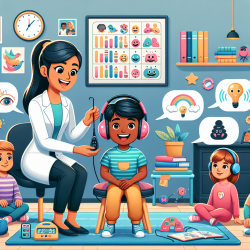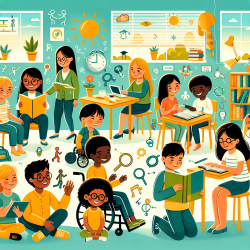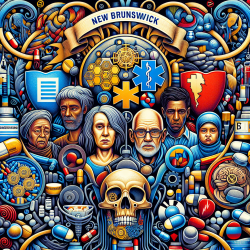As practitioners dedicated to improving the lives of children through speech-language therapy, staying informed about the latest research is crucial. A recent study titled "Behaviors related to autism spectrum disorder in children with developmental language disorder and children with 22q11.2 deletion syndrome" provides valuable insights that can enhance our clinical practice. This blog aims to distill the key findings and discuss how they can be applied to improve outcomes for children with Developmental Language Disorder (DLD) and 22q11.2 Deletion Syndrome (22q11DS).
Key Findings
The study compared three groups of children: those with 22q11DS, those with DLD, and typically developing (TD) children. The researchers found that both the 22q11DS and DLD groups exhibited significantly more behaviors related to Autism Spectrum Disorder (ASD) than the TD group. Specifically, over 30% of children in both clinical groups had scores exceeding the subclinical threshold for ASD in key behavioral domains, such as Social Communication and Interaction and Restricted Repetitive Behaviors and Interests.
Receptive Language Skills as a Predictor
One of the most striking findings was the relationship between receptive language skills and ASD-related behaviors. In children with 22q11DS, weaker receptive language skills at baseline were significantly correlated with increased ASD-related behaviors one year later. This association was not as strong in children with DLD, suggesting that the etiological homogeneity of 22q11DS makes it easier to detect such relationships.
Implications for Practice
These findings have several practical implications:
- Early Screening: Given the elevated rates of ASD-related behaviors in both 22q11DS and DLD, early screening for these behaviors is essential. This is particularly important for children with receptive language difficulties.
- Focus on Receptive Language: Therapy should place a strong emphasis on improving receptive language skills, especially in children with 22q11DS. Enhancing these skills may reduce the likelihood of developing ASD-related behaviors.
- Targeted Interventions: For children with DLD, consider that a subgroup may behave similarly to children with 22q11DS. Tailoring interventions to target receptive language in these children could be beneficial.
Encouraging Further Research
The study underscores the need for more research to explore the relationship between language difficulties and ASD-related behaviors in children with DLD. Specifically, future studies should focus on identifying subgroups within the DLD population that may benefit from targeted interventions aimed at improving receptive language skills.
To read the original research paper, please follow this link: Behaviors related to autism spectrum disorder in children with developmental language disorder and children with 22q11.2 deletion syndrome.










